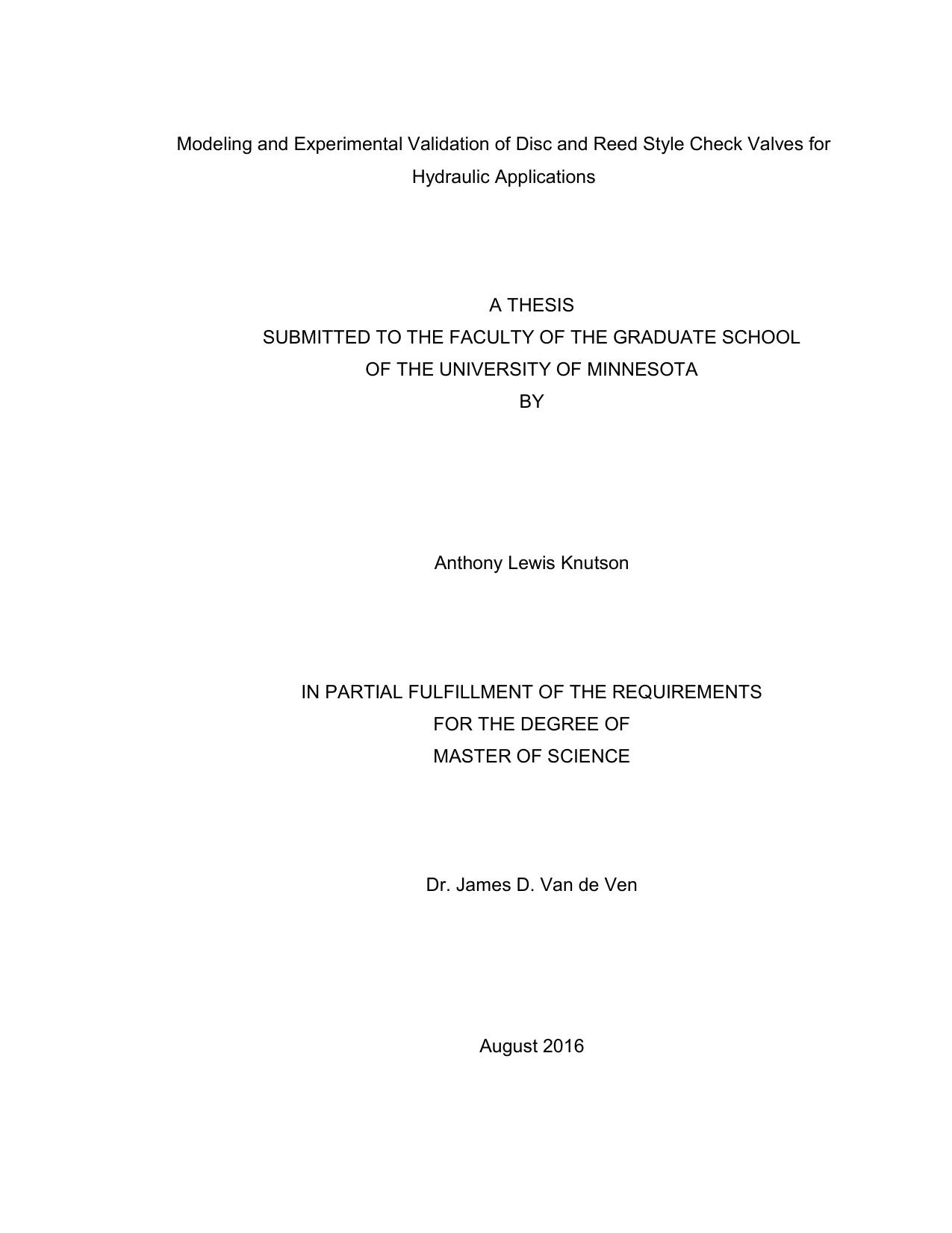Download Modeling and Experimental Validation of Disc and Reed Style Check Valves for Hydraulic Applications PDF Free - Full Version
Download Modeling and Experimental Validation of Disc and Reed Style Check Valves for Hydraulic Applications by Anthony Knutson in PDF format completely FREE. No registration required, no payment needed. Get instant access to this valuable resource on PDFdrive.to!
About Modeling and Experimental Validation of Disc and Reed Style Check Valves for Hydraulic Applications
<p><span>The goal of this thesis is to develop a computationally inexpensive, accurate, and </span>practical mathematical model of a hydraulic reed style check valve. While the modeling of disc style check valves is well represented in literature, reed valve modeling research has focused on applications in air compressors and internal combustion engines, where the working fluid has low density, viscosity, and bulk modulus. However, in a hydraulic system, the fluid – namely oil – is dense, viscous, and stiff, contributing additional physical effects that must be considered. Furthermore, the operating pressure in hydraulic systems is higher than in pneumatic systems, creating additional challenges from a structural perspective.In this thesis, a one degree of freedom hydraulic disc and reed style check valve model were developed using a hybrid analytical, computational, and experimental approach. The disc valve equation of motion was derived from Newton’s second law applied to the disc considering forces including pressure, spring reaction, and drag. Euler-Bernoulli beam theory was used to derive the reed valve equation of motion. In each case,the valve flow rate was modeled as quasi-steady orifice flow using an empirical discharge coefficient.</p>
Detailed Information
| Author: | Anthony Knutson |
|---|---|
| Publication Year: | 2016 |
| Pages: | 170 |
| Language: | other |
| File Size: | 6.7474 |
| Format: | |
| Price: | FREE |
Safe & Secure Download - No registration required
Why Choose PDFdrive for Your Free Modeling and Experimental Validation of Disc and Reed Style Check Valves for Hydraulic Applications Download?
- 100% Free: No hidden fees or subscriptions required for one book every day.
- No Registration: Immediate access is available without creating accounts for one book every day.
- Safe and Secure: Clean downloads without malware or viruses
- Multiple Formats: PDF, MOBI, Mpub,... optimized for all devices
- Educational Resource: Supporting knowledge sharing and learning
Frequently Asked Questions
Is it really free to download Modeling and Experimental Validation of Disc and Reed Style Check Valves for Hydraulic Applications PDF?
Yes, on https://PDFdrive.to you can download Modeling and Experimental Validation of Disc and Reed Style Check Valves for Hydraulic Applications by Anthony Knutson completely free. We don't require any payment, subscription, or registration to access this PDF file. For 3 books every day.
How can I read Modeling and Experimental Validation of Disc and Reed Style Check Valves for Hydraulic Applications on my mobile device?
After downloading Modeling and Experimental Validation of Disc and Reed Style Check Valves for Hydraulic Applications PDF, you can open it with any PDF reader app on your phone or tablet. We recommend using Adobe Acrobat Reader, Apple Books, or Google Play Books for the best reading experience.
Is this the full version of Modeling and Experimental Validation of Disc and Reed Style Check Valves for Hydraulic Applications?
Yes, this is the complete PDF version of Modeling and Experimental Validation of Disc and Reed Style Check Valves for Hydraulic Applications by Anthony Knutson. You will be able to read the entire content as in the printed version without missing any pages.
Is it legal to download Modeling and Experimental Validation of Disc and Reed Style Check Valves for Hydraulic Applications PDF for free?
https://PDFdrive.to provides links to free educational resources available online. We do not store any files on our servers. Please be aware of copyright laws in your country before downloading.
The materials shared are intended for research, educational, and personal use in accordance with fair use principles.

